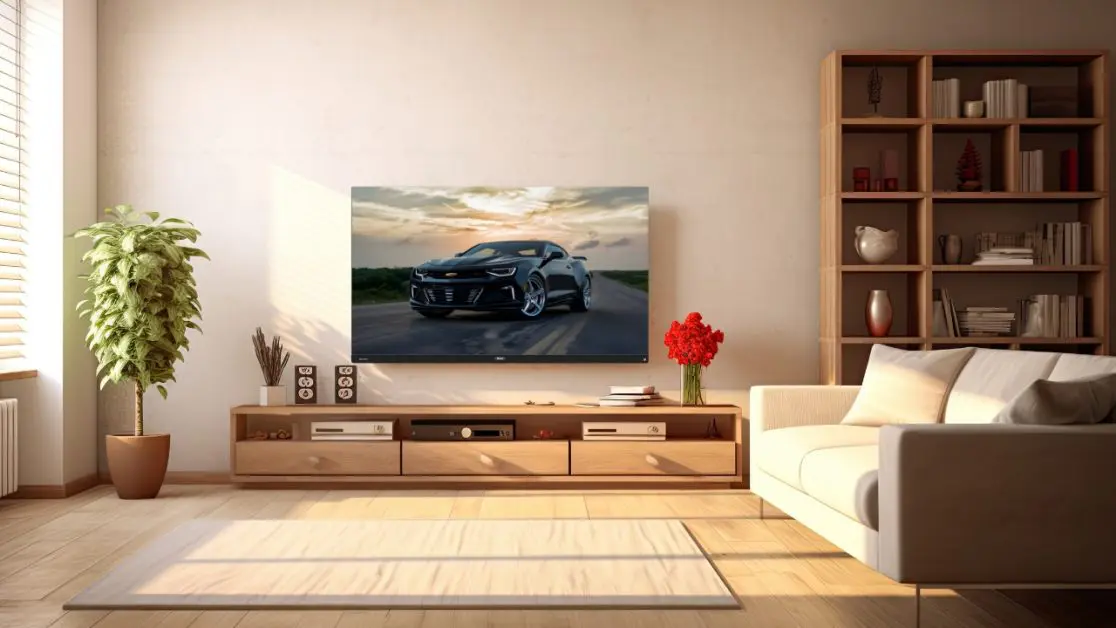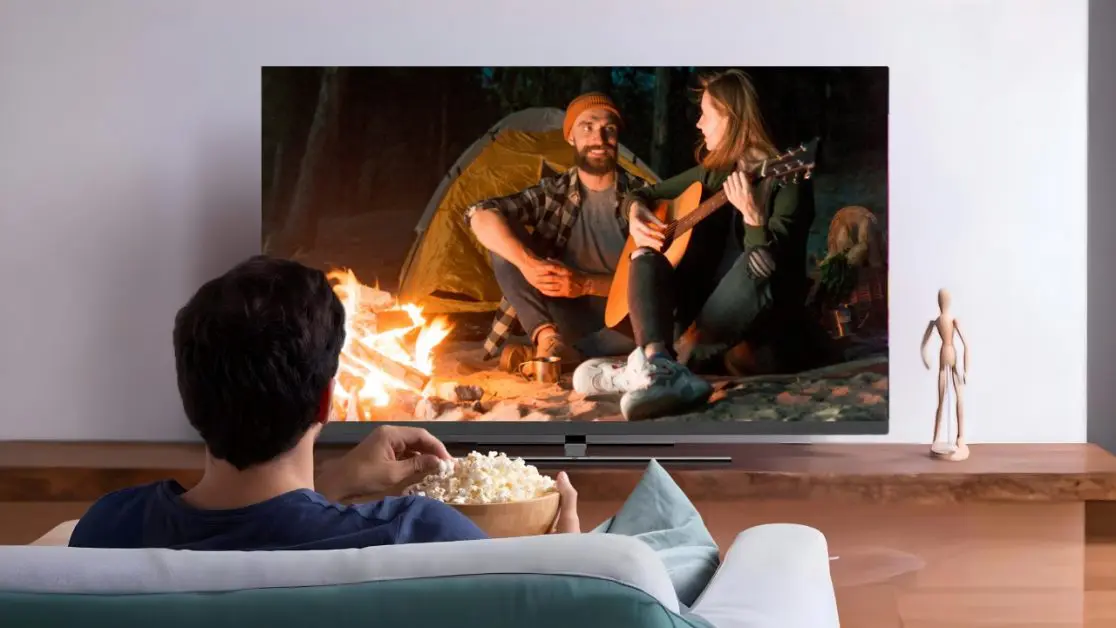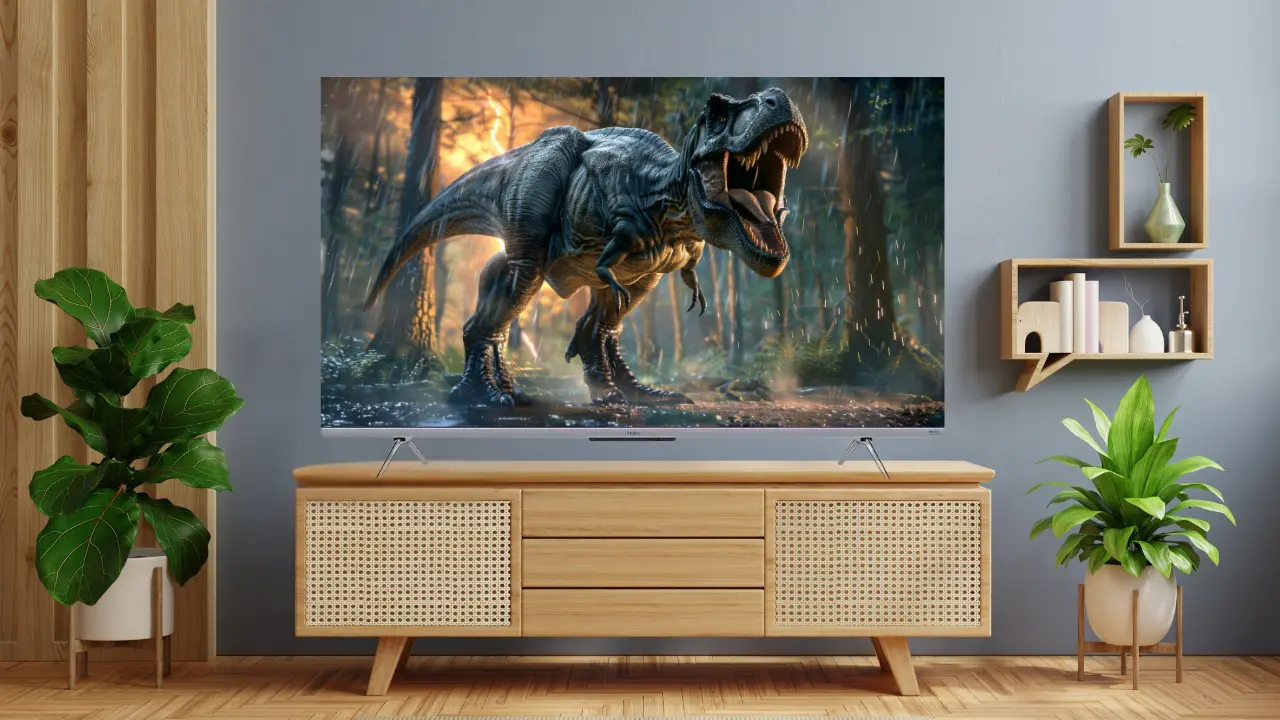Watching TV in a bright, sunlit room can be a challenge. The glare from windows and bright lights can make it hard to see the picture clearly on many TVs. If you want to enjoy watching TV during the day without closing all your blinds, getting the right LED TV for bright rooms is key. LED TVs have come a long way in terms of being able to produce a visible, vibrant picture even when there is a lot of ambient light. With advancements in LED backlighting technology, LED TVs are now a great option for bright viewing environments.
Understanding the Challenges of Bright Rooms

The Glare Factor
Sunlight and artificial lights create glare on screens, making it hard for people to see pictures properly. The brightness washes out colors, thereby making them less vibrant too. This happens since large windows and open floor layouts are popular among Indians, which leads to this problem being more common here than anywhere else.
Color Washout
Another problem with bright environments is color washout, where ambient light overpowers displays of TVs, causing them to appear duller than they should be. This greatly affects one’s viewing pleasure, particularly while watching things like cricket matches or Bollywood films which have many different shades.
Key Features to Look for in an LED TV for Bright Rooms

High Brightness (Nits)
Brightness is measured in nits and is what combats ambient light around televisions. When shopping for models meant to be used under direct sunlight, ensure their maximum peak luminance exceeds 1000 nits; though some high-end sets reach 2000 nits or even higher.
Anti-Glare Screen Technology
Modern-day LEDs often come equipped with anti-reflective or anti-glare coatings on their panels meant specifically for bright conditions where there might be reflections caused by surrounding lights hitting against the surface of these screens, thereby reducing visibility improvements brought about by diffusing such rays away from our eyes instead. So ask about them when purchasing.
HDR (High Dynamic Range)
HDR improves contrast between different parts within an image, making some areas look brighter while others appear darker at the same time, thus creating more vibrant colors even when viewed in bright rooms. Make sure your chosen television supports HDR10 or Dolby Vision among other formats for best results.
Wide Viewing Angles
In order to avoid glare, one may have to sit at various angles within a room. Hence, wider viewing angles are needed if picture quality is to remain constant throughout. Thus, this feature becomes more useful in large family rooms where people might sit at different positions depending on what they are doing.
Choosing the Right Screen Size

Room Dimensions Matter
A TV that is too big for a given space can be overwhelming and harder to watch comfortably, especially in well-lit areas. Measure the distance from where you will be seated most of the time to where your set would stand, then use this formula: divide by 1.5 so as to get an estimate of what diagonal measurement should do.
Give Some Thought to the Viewing Distance
When it is bright around, people have a tendency to sit closer to the TV so that they can see better. This should be considered when choosing the size of the screen. For example, a 55-inch television could work well in a brightly lit living room, while a 65-inch model might be more suitable for an open-plan space.
Importance of TV Placement
Avoid Direct Sunlight
If possible, don’t put your television where it will be exposed to direct sunlight. You can do this by placing it on a wall adjacent to windows rather than opposite them. But if you cannot completely avoid sunlight, consider purchasing some curtains or blinds which may help you control light as need arises.
Consider Ambient Lighting
Also, think about artificial lighting in the room itself. Avoid having lamps or other light sources directly behind or in front of the screen. Instead, use indirect lighting that does not create reflections on the screen.
Advanced Technologies for Bright Room Viewing

Local Dimming
LED TVs with local dimming are capable of adjusting backlighting in certain parts of the display, thereby enhancing contrast and black levels. Such technology becomes very handy, especially when trying to maintain deep blacks under a bright environment.
Quantum Dot Technology
Some high-end LED TVs utilize quantum dot technology which enables them to produce richer and more accurate colors. This can make a huge difference in areas where vibrant colors tend to get washed out due to brightness, such as sunny rooms.
Energy Efficiency Considerations

Look for Energy Star Ratings
In India, electricity cost is still expensive, hence a good idea would be selecting energy efficient television sets which come with a higher number of stars as rated by BEE (Bureau Of Energy Efficiency). These models are designed to consume less power without compromising performance level too much.
Adjust Settings for Efficiency
The majority of flat panel displays, whether LCDs or Plasmas, offer eco-friendly modes through which one can adjust brightness among other things so as to save on power. Although these may not work well under all viewing conditions, they do come in handy when dealing with extremely bright environments.
Making Your Final Decision

Read User Reviews
Before buying any television set, it is always advisable to read through some user reviews, especially from people who have used the same devices indoors as yours. They usually share real-life experiences which can help one make an informed decision based on specifications provided by the manufacturer alone.
Consider Your Budget
It’s true that expensive sets tend to offer better performance under high ambient light conditions, but this does not mean there are no affordable options available. Have a predetermined amount of money you can spend, then look for features within your price range, such as mid-level anti-glare technology, which might outperform a top-end model lacking such a feature in a sunny room.
Conclusion
Selecting the appropriate LED TV for a bright room calls for consideration of several aspects like screen size, brightness level, anti-glare capability, and placement among others. By following these guidelines, you should be able to find a suitable television that delivers great visuals even in the most sunlit Indian homes.
Haier India provides LED TVs which are perfect for watching TV in bright rooms because they have all the right features. They have just launched some new models that use anti-glare technology and have high brightness settings; these will work best in our sunny climate as well as being energy efficient too. Whether it is a cricket match or movie night with family, Haier ensures that no matter how bright your room may be, not a second of the action will go unseen.
Remember, there is a perfect television out there waiting for you! Take your time and research well before making any decisions. Don’t be afraid to ask for demonstrations either – with such good options available, it won’t take long until crystal clear, vibrant visuals are filling up every corner of your sunlit Indian home!

